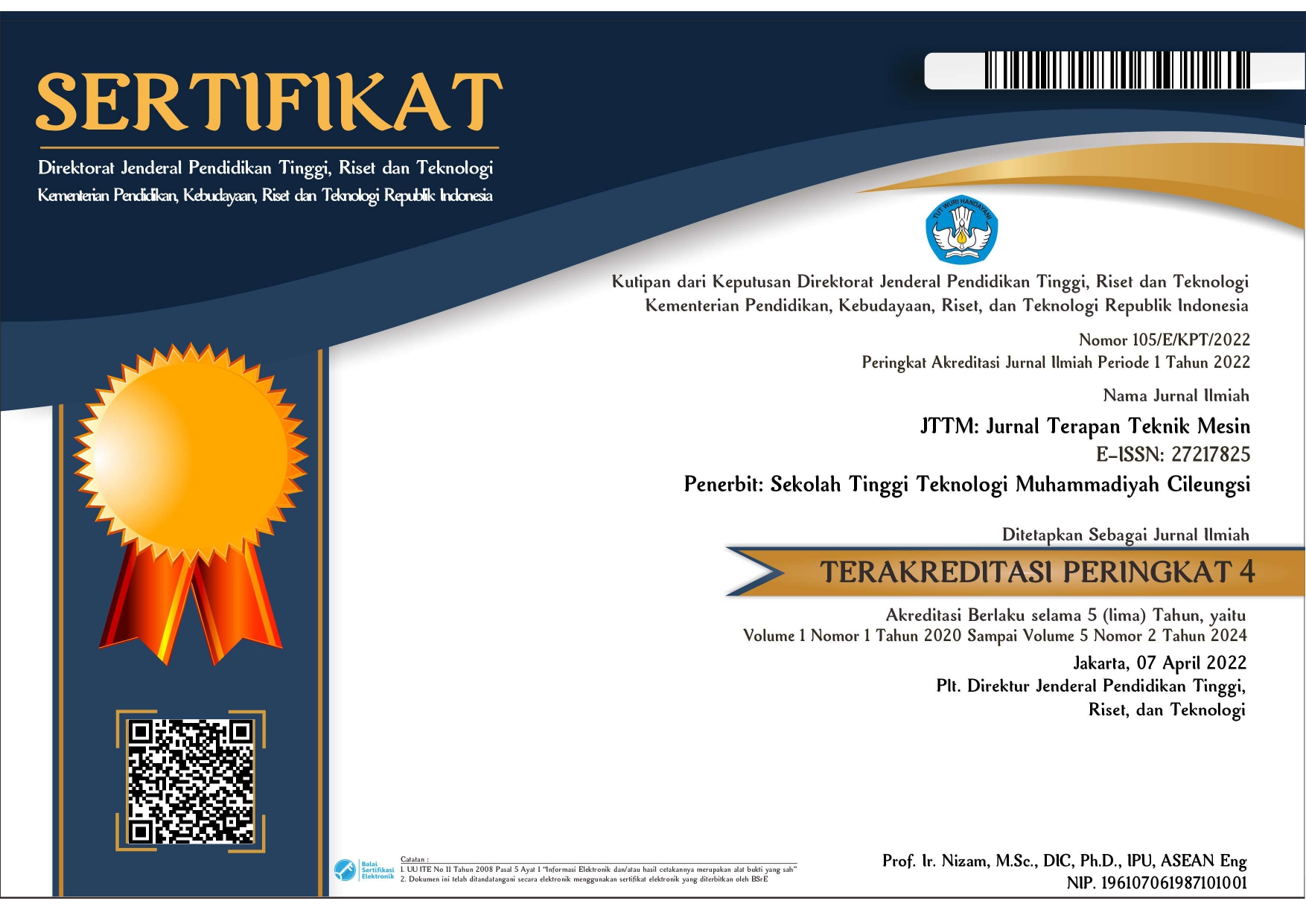Analysis of the impact of misfiring on the throttle body in ayla vehicles using the fast fourier transform method
Abstract
An essential component of an automobile's air intake system, the throttle body controls airflow during combustion by acting as an idle speed control mechanism. Making ensuring the throttle body is operating properly is crucial to keeping the engine running at its best. The Fast Fourier Transform vibration analysis is one technique used for this (FFT). A an LCGC Ayla 1000 cc vehicle's throttle body and engine underwent vibration testing with rotational rates set to 750 rpm, 1000 rpm, 1500 rpm, and 2000 rpm. Vibration responses were measured using an accelerometer sensor coupled to an FFT analyzer, and Matlab was used for analysis. The throttle body had anomalous frequency readings at 1977 Hz with an amplitude of 0.03171 m/s2, according to the test results. On the other hand, the frequency value at 1410 Hz with an amplitude of 0.03435 m/s2 was observed under normal circumstances. Similar to this, abnormal frequency values with an amplitude of 0.02378 m/s2 were found on the engine at 1493 Hz, whereas normal frequency values with the same amplitude were found at 1712 Hz. These results point to incomplete combustion as the cause of the increased vibration
Copyright (c) 2024 Usman Rosid Mashuri, Muhammad Nurul Hidayat, Basuki Dwi Efendy, Subekti Subekti

This work is licensed under a Creative Commons Attribution-NonCommercial 4.0 International License.











